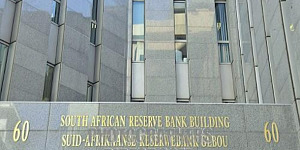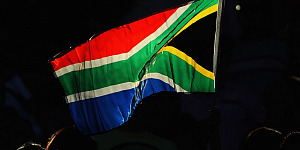Fitch Ratings has revised the Outlook on South Africa's Long-Term Foreign-Currency Issuer Default Rating (IDR) to Negative from Stable and affirmed the IDR at 'BB+'.
Key Rating Drivers
The Outlook revision reflects a marked widening in the budget deficit as a result of lower GDP growth and increased spending, including state-owned enterprise (SOE) support, increasing our projections for government debt/GDP and heightening the difficulty of stabilising debt/GDP over the medium term. Renewed downward revisions to GDP growth in 2019 also raise new questions about South Africa's GDP growth potential. The social context of exceptionally high inequality will constrain the government's policy response to these challenges.
Fiscal metrics have deteriorated significantly due to under-performance of revenue, which is expected to worsen in the current fiscal year as growth has turned out to be weaker than expected. Low trend GDP growth means that economic recovery is not expected to drive a major fiscal improvement in later years, while we also forecast expenditure to increase by approximately 2pp of GDP in FY19/20-FY21/22. A special appropriations bill tabled in late July provides for government support to Eskom, the troubled national electricity company, of ZAR26 billion (0.5% of GDP) in the in fiscal year ending March 2020 (FY19/20) and ZAR33 billion in FY20/21 in addition to ZAR23 billion per year approved in the budget. As a result, Fitch expects the consolidated general government (GG) deficit to widen to 6.3% of GDP FY19/20, significantly higher than the outcome of 4.2% for FY18/19 and the government's forecast of 4.5% for FY19/20 from the February budget.
We project the GG deficit to decline to a still high 5.2% of GDP in FY21/22, still more than double the current 'BB' median deficit forecast of 2.3%. Initial guidelines issued to departments in preparation for the October Medium-Term Budget Policy Statement suggest that the government will seek to implement significant consolidation measures, but the already high tax burden and social pressures on spending limit its room for manoeuvre.
Fitch forecasts GG debt to increase further to 68% of GDP in FY21/22, and debt may continue rising after that. GG debt was 57.3% in FY18/19 (including central government gross loan debt of 55.6% of GDP and 1.6% of GDP of local government debt), compared with a current 'BB' category median of 44.6%. The debt structure helps to reduce refinancing and foreign-exchange risks, with a particularly long average maturity of central government debt of 13.2 years and foreign-currency debt accounting for just 8.2% of GG debt.
Upside risks to debt projections arise from 14.3% of GDP debt of non-financial SOEs, several of which, including Eskom, experience acute financial stress. Other contingent liabilities include debt of financial SOEs (2% of GDP), guarantees to independent power producers (3% of GDP) and the actuarial liabilities of the Road Accident Fund (expected to rise to 5.6% of GDP in FY21/22), but these are less likely to materialise on the GG balance sheet in the medium term.
The government is investigating options to secure the longer-term viability of Eskom, including potentially relieving the company of some or all of its debt of 9.1% of GDP. To fix the underlying on-going losses, support from the government is intended to be combined with consolidation and re-structuring measures, including a separation of electricity generation, transmission and distribution into different business units. However, trade unions, fearing privatisation and job losses, are strongly opposed to these measures and Fitch believes significant progress will be challenging.
Low GDP growth is increasingly weighing on South Africa's credit profile. Fitch estimates potential GDP growth at just 1.7%, compared with a current 'BB' category median of 2019 GDP growth of 3.4%. We expect growth of just 0.5% in 2019 after 0.8% in 2018, reflecting continued weak gross fixed investment and subdued private consumption. The government is making efforts to boost growth, including an investment initiative, measures to accelerate infrastructure investment, reduce costs in logistics and telecommunications and improve immigration rules to strengthen tourism. However, the scale of the measures and the slow pace of implementation suggest that the impact on growth is likely to remain muted.
The 'BB+' IDR also reflects the following key rating drivers:
South Africa continues to depend on potentially volatile portfolio inflows for financing its current-account deficit (CAD). We expect the CAD to decline only moderately to 3.1% in 2021 from 3.6% of GDP in 2018, partly reflecting a decline in the price of oil imports. Net external debt will rise to 27.3% of GDP in 2021, compared with a 'BB' category median of 17.6% in the same year. Significant participation of foreign portfolio investors in South Africa's local currency central government debt market, holding 38.7% of outstanding debt in May, could lead to sudden outflows in the case of increased global risk aversion. International liquidity is low relative to short-term financial obligations, but the flexibility of the rand exchange rate and the high liquidity of the ZAR/USD foreign exchange market serve as shock absorbers.
The credibility of the South African Reserve Bank (SARB) and its inflation targeting regime are an important credit strength. Inflation has recently undershot expectations, allowing SARB to cut its interest rates in July. The banking sector is well-regulated and healthy. The large non-bank financial sector (including pension funds and long-term insurance) is large, with assets of 184% of GDP at end-2018. Given the sector's exposure to government debt is relatively low and caps on foreign investment, it could help absorb a potential outflow of foreign investors.
The governing party, the ANC, won the national election in May, with 230 out of 400 seats. However, continued in-fighting within the ANC is likely to draw attention away from policy-making. The government will also continue to struggle to manage competing objectives of reducing exceptionally high inequality, boosting GDP growth and containing populist pressures, while maintaining macroeconomic stability. Fitch believes that the government will handle land reform, including measures to allow for expropriation without compensation, in a way that will not damage growth or public finances, but the discussion could raise international investors' concerns about property rights in the long term.
ESG CONSIDERATIONS
South Africa has an ESG Relevance Score of 4 for Energy Management, as the state-owned electricity provider Eskom is requiring substantial government support. This is relevant to the rating and a rating driver.
South Africa has an ESG Relevance Score of 4 for Human Rights and Political Freedoms, as World Bank Governance Indicators have the highest weight in Fitch's Sovereign Rating Model (SRM) and this is relevant to the rating and a rating driver.
South Africa has an ESG Relevance Score of 4 for Employment and Income Equality, as South Africa's exceptionally high inequality is one of the factors behind low trend growth and the difficulty in containing fiscal deficits. This is relevant to the rating and a rating driver.
South Africa has an ESG Relevance Score of 5 for Political Stability and Rights, as World Bank Governance Indicators have the highest weight in Fitch's SRM and high income inequality in South Africa could pose long-term challenges to political stability. This is therefore highly relevant to the rating and a key rating driver with a high weight.
South Africa has an ESG Relevance Score of 5 for Rule of Law, Institutional and Regulatory Quality and Control of Corruption, as World Bank Governance Indicators have the highest weight in the SRM and this is therefore highly relevant to the rating and a key rating driver with a high weight.
South Africa has an ESG Relevance Score of 4 for Creditors Rights as willingness to service and repay debt is relevant to the rating and a rating driver, as for all sovereigns.
Sovereign Rating Model (SRM) and Qualitative Overlay (QO)
Fitch's proprietary SRM assigns South Africa a score equivalent to a rating of 'BBB' on the Long-Term Foreign-Currency (LT FC) IDR scale.
Fitch's sovereign rating committee adjusted the output from the SRM to arrive at the final LT FC IDR by applying its QO, relative to rated peers, as follows:
- Macroeconomic Performance, Policies and Prospects: -1 notch, to reflect South Africa's weak growth prospects relative to the 'BB' and 'BBB' category medians and to population growth, with important implications for public finances and risks to social stability.
- Public Finances: -1 notch, to reflect substantial contingent liabilities mainly from SOEs, exacerbated by significant challenges to the liquidity and long-term viability of some of the SOEs, and a continued upward trajectory of the ratio of government debt to GDP.
Fitch's SRM is the agency's proprietary multiple regression rating model that employs 18 variables based on three-year centred averages, including one year of forecasts, to produce a score equivalent to a LT FC IDR. Fitch's QO is a forward-looking qualitative framework designed to allow for adjustment to the SRM output to assign the final rating, reflecting factors within our criteria that are not fully quantifiable and/or not fully reflected in the SRM.
RATING SENSITIVITIES
The following risk factors could, individually or collectively, result in a downgrade:
- Failure to stabilise the debt/GDP ratio over the medium term.
- A further deterioration in South Africa's trend GDP growth rate.
- Increased vulnerability resulting from the current account deficit and external financing needs.
Developments that could individually, or collectively, result in a stabilisation of the Outlook include:
- Narrowing in the budget deficit sufficient to stabilise the government debt/GDP ratio.
- A strengthening in trend GDP growth.
- An improvement in financial viability of SOEs.
Key Assumptions
Fitch expects global economic trends and commodity prices to develop as outlined in Fitch's Global Economic Outlook.






































